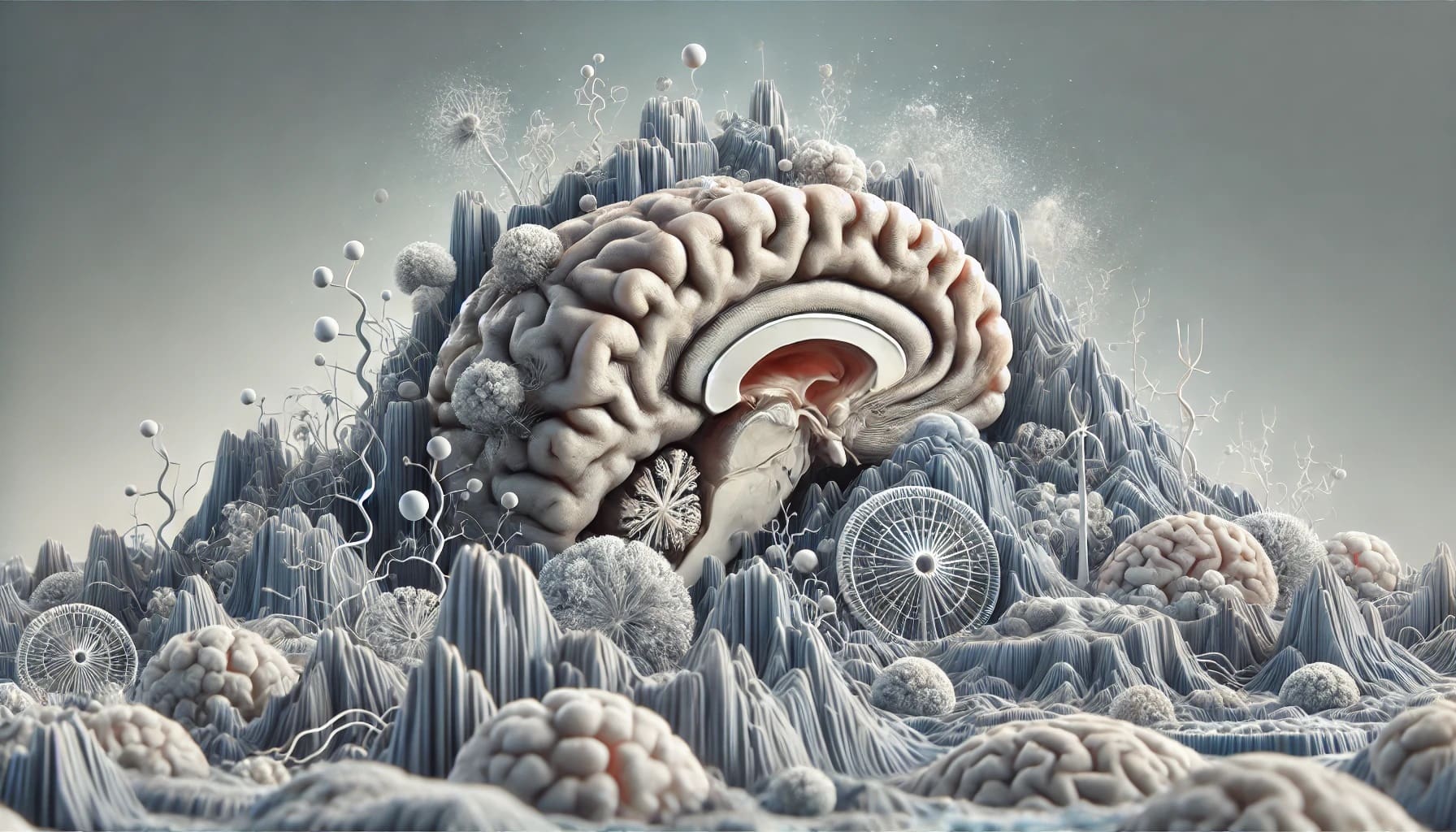
What are cerebral calcification and cerebellar hypoplasia? These two neurological conditions can significantly affect a person's life. Cerebral calcification involves calcium deposits in the brain, while cerebellar hypoplasia means the cerebellum is underdeveloped. Both conditions can arise from genetic mutations, infections, or metabolic disorders. Symptoms vary widely, from movement issues and developmental delays to seizures and intellectual disabilities. Diagnosing these conditions often requires MRI scans and genetic testing. Treatment focuses on managing symptoms through therapies like physical, speech, and occupational therapy. Understanding these conditions helps in providing better care and support for those affected.
Key Takeaways:
- Cerebral calcification and cerebellar hypoplasia are complex neurological conditions with diverse symptoms, requiring careful diagnosis and supportive care for improved management and prognosis.
- Genetic encephalopathies, including Aicardi-Goutières Syndrome, and congenital CMV infection can lead to cerebral calcification and cerebellar hypoplasia, highlighting the importance of ongoing research and international collaboration for better understanding and treatment.
Understanding Cerebral Calcification and Cerebellar Hypoplasia
Cerebral calcification and cerebellar hypoplasia are two neurological conditions that can greatly affect a person's life. Let's explore some key facts about these conditions.
-
Cerebral Calcification: This involves calcium deposits forming within brain tissue. It can be primary (genetic) or secondary to other conditions like metabolic disorders, autoimmune diseases, and infections.
-
Primary Familial Brain Calcification (PFBC): PFBC is a genetic disorder where calcium builds up in the brain. It often involves mutations in genes like SLC20A2, PDGFB, PDGFRB, XPR1, MYORG, and JAM2.
-
Genetic Complexity of PFBC: Multiple genes contribute to PFBC. Some people with these gene mutations might not show symptoms, while others could have severe calcification and neurological issues.
-
Symptoms of PFBC: Symptoms vary widely. Some people might have movement disorders, headaches, and psychiatric issues, while others might not show any symptoms despite significant calcification.
Cerebellar Hypoplasia: What You Need to Know
Cerebellar hypoplasia involves the underdevelopment of the cerebellum, a crucial part of the brain. This condition can be present from birth or develop later.
-
Cerebellar Hypoplasia: This condition means the cerebellum is underdeveloped or partially developed. It can be congenital or acquired and is linked to various genetic and metabolic disorders.
-
Symptoms of Cerebellar Hypoplasia: Symptoms include floppy muscle tone, developmental delays, speech difficulties, balance problems, seizures, intellectual disability, and involuntary eye movements.
-
Diagnosing Cerebellar Hypoplasia: Diagnosis involves clinical evaluation, imaging studies, and genetic testing. MRI scans are essential for visualizing the cerebellum and detecting abnormalities.
-
MRI Classification: MRI scans can show different types of cerebellar malformations, including global cerebellar hypoplasia, vermian involvement, isolated vermian hypoplasia, and pontocerebellar hypoplasia.
Genetic Encephalopathies and Cerebral Calcification
Genetic encephalopathies with cerebral calcification are complex disorders with diverse symptoms. Understanding these conditions helps in managing them better.
-
Genetic Encephalopathies: These are disorders where calcium deposits form in the brain. They often present with developmental delays, movement disorders, and epilepsy.
-
Aicardi-Goutières Syndrome (AGS): AGS is a common pediatric encephalopathy with cerebral calcification. It involves mutations in the RNASEH2B gene and presents with intellectual disability and pyramidal signs.
-
Congenital CMV Infection: This infection is a leading cause of periventricular calcifications and cerebellar hypoplasia in infants. It often results in developmental delays and intellectual disability.
-
Radiological Features: MRI scans show a smaller cerebellum, thin cortex, shallow sulci, and periventricular calcifications in cerebellar hypoplasia.
Treatment and Prognosis
Managing these conditions involves symptomatic and supportive care. The prognosis varies depending on the underlying disorder.
-
Treatment of Cerebellar Hypoplasia: There is no standard treatment. Care focuses on managing symptoms and improving quality of life through physical, speech, and occupational therapy.
-
Prognosis of Cerebellar Hypoplasia: Prognosis varies. Some disorders are progressive, leading to worsening symptoms, while others are not, resulting in a better outcome.
-
Research on Cerebellar Hypoplasia: The National Institute of Neurological Disorders and Stroke (NINDS) supports research to find better ways to prevent, treat, and cure disorders featuring cerebellar hypoplasia.
Support and Resources
Support from organizations and advancements in diagnostic techniques play a crucial role in managing these conditions.
-
Organizations Supporting Rare Disorders: Groups like the National Organization for Rare Disorders (NORD) provide support and resources for individuals affected by rare disorders, including cerebellar hypoplasia.
-
Cerebral Calcification in Pediatric Encephalopathy: Cerebral calcification is a significant diagnostic criterion in pediatric encephalopathy. Next-generation sequencing (NGS) helps identify genetic mutations associated with these conditions.
-
Role of RNASEH2B in AGS: The RNASEH2B gene is commonly involved in AGS. Mutations lead to cerebral calcifications and various neurological symptoms.
-
Complex Phenotypes in Genetic Encephalopathies: These conditions often present with complex phenotypes, including developmental delays, movement disorders, and epilepsy.
Diagnostic Challenges and Ethical Considerations
Diagnosing these conditions can be challenging due to their complexity. Ethical considerations are also crucial in genetic testing.
-
Diagnostic Challenges: Diagnosing cerebral calcification and cerebellar hypoplasia requires clinical evaluation, imaging studies, and genetic testing. Dedicated gene panels can aid in diagnosis.
-
Ethical Considerations in Genetic Testing: Informed consent is essential, and results must be communicated sensitively. Next-generation sequencing raises ethical questions about data privacy and incidental findings.
Supportive Care and Advancements
Supportive care and advancements in diagnostic techniques are vital for managing these conditions.
-
Supportive Care: This includes physical, speech, and occupational therapy, along with psychological support. Families play a crucial role in providing ongoing care.
-
Advancements in Diagnostic Techniques: Next-generation sequencing has improved the diagnosis of these conditions. MRI scans provide detailed images of the brain, aiding in the detection of abnormalities.
International Collaboration and Future Research
International collaboration and ongoing research are essential for advancing our understanding and management of these conditions.
-
International Collaboration: Groups like the Cerebral Calcification International Study Group bring together researchers from various countries to share knowledge and resources.
-
Future Directions in Research: Future research aims to develop targeted therapies and identify additional genetic variants associated with these conditions. More epidemiological studies are needed to understand their prevalence and impact.
Final Thoughts on Cerebral Calcification and Cerebellar Hypoplasia
Cerebral calcification and cerebellar hypoplasia are complex neurological conditions that can significantly impact lives. Understanding their genetic and environmental causes, symptoms, and diagnostic methods is crucial for effective management. Genetic mutations, infections like congenital CMV, and metabolic disorders often play a role. Symptoms vary widely, from movement disorders to intellectual disabilities. MRI and genetic testing are key diagnostic tools. Treatment focuses on managing symptoms through therapies like physical and speech therapy. Research continues to uncover new insights, aiming for better prevention and treatment. Support from organizations and international collaboration is vital. Ongoing studies and advancements in diagnostic techniques offer hope for improved outcomes. Understanding these conditions helps provide better care and support for affected individuals and their families.
Frequently Asked Questions
Was this page helpful?
Our commitment to delivering trustworthy and engaging content is at the heart of what we do. Each fact on our site is contributed by real users like you, bringing a wealth of diverse insights and information. To ensure the highest standards of accuracy and reliability, our dedicated editors meticulously review each submission. This process guarantees that the facts we share are not only fascinating but also credible. Trust in our commitment to quality and authenticity as you explore and learn with us.


